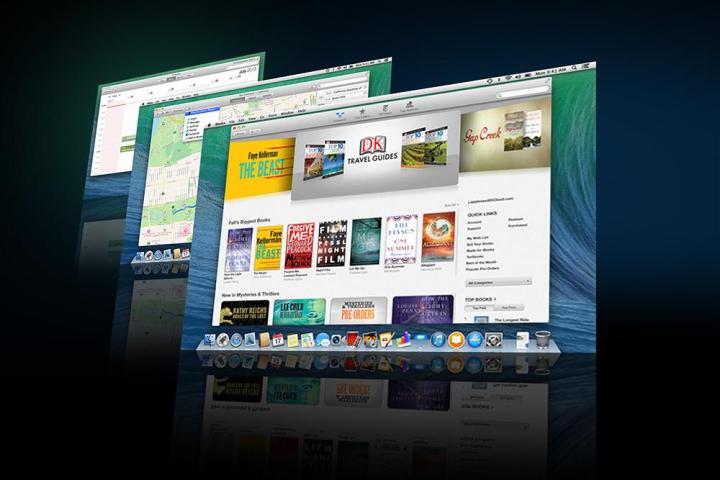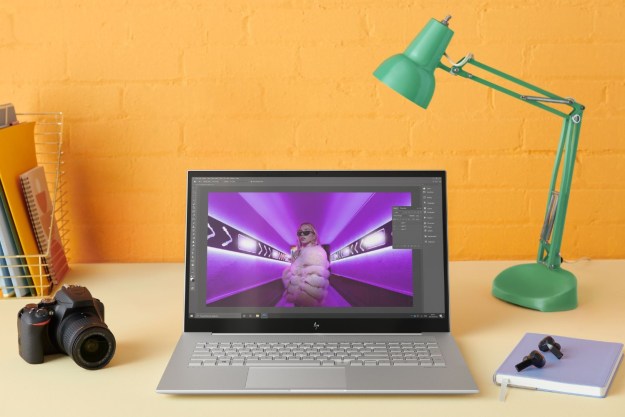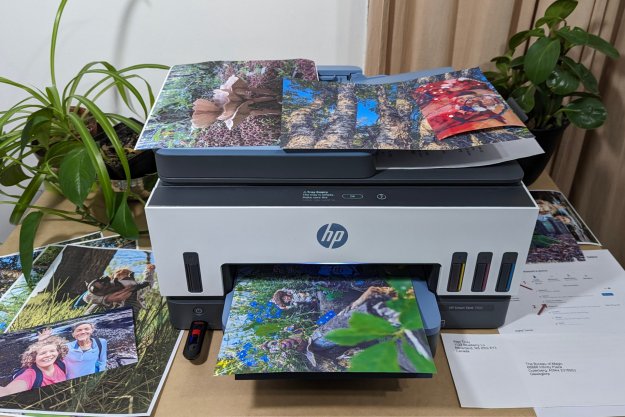
Apple’s introduction of Mavericks in June was flanked by a message the company battered into the audience with everything from demonstrations to jokes; OS X still matters. The last half-decade has witnessed the company’s transformation from a computer manufacturer into a mobile titan, and Mac users have become understandably wary. The introduction of the Mac App Store and iOS-like notifications only worsened these concerns; would OS X’s evolution come to rely on iOS hand-me-downs?
The release of Mavericks is Apple’s chance to prove its commitment to the Mac, and the company made a convincing argument before we laid hands on the new OS with a surprise announcement; Mavericks free for anyone with a Mac running Snow Leopard or later. While this is also a shift towards a mobile development model, it’s one few users are likely to gripe about. Free is good, and it largely eliminates the skepticism many consumers have when asked to pay $20 or $30 bucks for what may seem a marginal update.
This doesn’t buy the latest version of OS X a pass, however. Apple still needs to convince Mac users that the company’s computers aren’t a side-show, and distributing Mavericks for free could be interpreted as a lack of confidence. Is Mavericks a move in a new, better direction, or another tiny step sideways?
Finder leaps forward
Navigating files isn’t the most straightforward task, which is why mobile operating systems tend to step around it, but desktops must have a way of dealing with the massive amounts of data they store. Finder, the Mac file explorer, has not aged particularly well, and Mavericks is finally giving it two helpful updates.
The first is tabs, which is obviously inspired by browsers and works exactly the same. A new tab lets a user explore additional folders without opening an entirely new window, and files can be moved between tabs via drag-and-drop. This is a particularly handy feature to have on an 11-inch or 13-inch MacBook, neither of which have the screen real estate to comfortably contain more than a few Finder windows. In fact, we now miss having the feature on Windows laptops. Microsoft should really think of adding this to Explorer.

Tags are the other big addition, and they also work like the functionality they borrow from. Tags can be applied to files through the context menu and users can see all files with a certain tag by clicking that tag’s entry in the Finder sidebar. This effectively works like the Libraries feature that Microsoft strangely disabled with Windows 8.1, but better; the Libraries feature revolved around certain types of files (like photos or documents) while the tags found in Mavericks are more abstract.

For example, a photo needed for a professional photography project could be listed under “work,” but it can also be slapped with other tags based on its content or context. If given the “portrait” tag, it would become visible under both “work” and “portrait.” This system embraces the fact that many files lack a single use but instead are needed for different reasons at different times.
Another round for Safari
Every update to OS X also brings updates to Safari with it, and Mavericks is certainly no exception. While the main browser window looks the same as previous years, other portions of the interface have continued their iOS-ification. The latest to succumb is the Top Sites page, which opens by default when Safari starts. Gone is the curved glass look of the last few years, replaced by a simple, flat grid on a gray background. We don’t think it’d be too harsh to call it dull, but we do think it’s more practical. The old glass look always seemed like it was trying too hard.
Apple made a big deal of Safari’s performance updates, as the company does with every release. However, this time reality seems to match the hype. The Peacekeeper browser benchmark returned a score of 3,437, just south of Chrome’s score of 3,789 and far ahead of Firefox, which managed just 2,371. For reference, Safari used to score about 3,100 on the same hardware (a 2012 MacBook Air 13-inch).

Subjectively, we found the improvement reported by the benchmark to be noticeable. Scrolling is smoother than ever before, web apps like Google Drive hitch and lag with less frequency, and multi-tab browsing seems to demand less from a Mac’s hardware. Previously, we were torn as to whether Chrome or Safari was the best browser for OS X, as we appreciated the speed of the former but liked the features of the latter. With its performance enhanced, Safari is now the obvious choice.

Speaking of features, there are a couple new additions. The Reading List is now joined by Shared Links, which are brought in from your social media accounts (only Twitter and LinkedIn at Mavericks’ release). This is great if you use either to keep up on news and popular articles, but otherwise can easily be ignored. The same can be said for “Safari power saver” which automatically disables Flash ads that may be demanding too much power. Though handy, it’s nothing special.
There’s also a slew of other enhancements, such as Fast Start (which begins to load the top result of a search entered in the Smart Search bar) and Inline Maps (control-click an address on a web page to see a map). While welcome, these additions are not game changers, and some simply keep Safari up with the competition.
iCloud KeyChain is off the chain
Another featured added to Safari, one that deserves to be talked about at length, is iCloud KeyChain. This is essentially a password management feature similar to third-party services like LastPass. Passwords, once entered on a system tied to your iCloud account, can be saved to KeyChain. Once saved, they can be entered automatically the next time you visit the site. This works both on the Mac and on iOS devices running iOS 7.0.3 or later, so passwords saved on any iCloud device will be available on all of them.

Saving passwords in this way allows users to rely on longer, randomized, more secure passwords because remembering them is no longer necessary. While some may worry about entrusting Apple with password data, the company promises that all information is encrypted and stored in secure servers. In practice, trusting KeyChain with passwords is a better option than using the name of a favorite pet.

For most people, however, the real reason to use KeyChain will be convenience. Passwords can be a pain to enter, particularly on the iPhone and iPad. KeyChain takes away that hassle and replaces it with an almost instantaneous login experience on all iCloud connected devices. And unlike LastPass (and other third-party solutions), KeyChain is baked into the operating system, so there’s no need to run browser plugins to make it work.
A small step forward for apps
Mavericks also includes two new apps carried over from iOS; Maps and iBooks. Maps is essentially an online mapping service brought to the desktop, ala Google Earth, albeit with a somewhat more intuitive interface. The most attractive feature is 3D street view, which can display major metropolitan areas in full 3D; trees, hills, buildings and all. As cool as this feature is, though, it’s usually not as useful as standard map, so most users will spend more time in 2D. We also can’t help but point out that Bing Maps has this feature, along with low-altitude, bird’s eye photos that boast superior image quality.

The real reason to love the inclusion of Maps is its iCloud integration, which means that directions found on the Mac version of Maps can be sent directly to an iPhone or iPad. We tried this with an iPhone 5 and found that it worked exactly as advertised; maps sent from our Mac took no more than a few seconds to reach our iPhone. This is great for planning a day-trip, as the details can be worked out on the Mac’s larger screen, then sent to an iPhone for turn-by-turn directions.

The iBooks app is essentially a port of the iPad app, though it ironically has been stripped even more thoroughly of skeuomorphic elements. The library page is nothing more than a blank gray page on which titles are arranged and sidebars, when opened, present options as plain black text on a white background. As for options, the expected features are there; users can sort by collections, authors, categories or a simple list and a book, once open, can be highlighted or bookmarked.
It’s not just iBooks that has been stripped of design either. The new Contacts and Calendar apps share a similar fate, though the latter at least allows for color-coded appointments and looks a bit more lively as a result.

Apple’s decision to embrace minimalism is hardly a secret, but we can’t help but feel Apple has gone a bit too far with Mavericks. To make matters worse, Apple hasn’t finished the job. Apps like Reminders and Game Center (whose features felt green) are unchanged. While the design shortcomings don’t result in any functionality mishaps, they do make Mavericks feel somewhat unfinished, as if Apple’s best and brightest couldn’t come up with a new design quickly enough to meet company deadlines.
A greased apple
Besides improving Safari, Apple has made a number of other tweaks to how OS X performs. One of the most important is Timer Coalescing, a feature which groups together low-level processor operations and executes them at once as much as possible. This reduces the amount of a time the processor is active and in turn, increases battery life (our battery life tests are forthcoming).
Of course, the idea of grouping together operations may also bring worries of reduced responsiveness, but we didn’t find this to be the case. If anything, Mavericks feels more responsive than Mountain Lion – which is to say that programs launch, close and respond to input at least as quickly. Safari, for example, takes less than a second to open, while larger programs like Microsoft Word launch in just three to five seconds.

Another tweak made by Mavericks comes in the form of compressed RAM, a feature which runs compression on data to be stored in RAM with the goal of increasing the amount which can be stored. Apple states that a Mac with 4GB of RAM can now store up to 6GB of short-term data. We did notice that our MacBook handled multitasking more smoothly after upgrading than it did before, but whether this can be attributed to compressed RAM or general performance tweaks is difficult to ascertain.
Whatever the technical details, we can confidently say that – at least on relatively modern Mac hardware – Mavericks is a performance hit. Everyday use feels smooth even on a MacBook Air, one of the least powerful Macs that Apple produces.
Conclusion
If Mavericks is meant to reaffirm Apple’s commitment to the Mac, it has failed. The lack of dramatic new features and the bare-bones nature of some apps does little to refresh OS X, an operating system that is now 12 years old. Users who enjoy OS X will find that Mavericks is the best version yet, while those who don’t wont see anything to change their mind. For the Mac, Mavericks simply reinforces the status quo.
What Mavericks actually bolsters it Apple’s commitment to its own ecosystem of products. The most convenient features that are new to Mavericks, like KeyChain and expanded iCloud support, help not OS X users but instead people who own both a Mac and another Apple product, be it an iPhone or iPad. To a user who has only a Mac, KeyChain is nice to have, but not revolutionary. To a user who also has an iPhone, however, it’s a big step forward in both convenience and security.
This is the part of the conclusion where we’d usually debate whether such incremental improvements were worth paying for, but this update is free, so that’s not an issue in this case. If you can upgrade to Mavericks, there is no reason why you shouldn’t, as almost everything that it adds is an improvement over what came before. Our only major gripe is the disappointingly bland new look of some apps, such as iBooks and Calendar. However, this small issue shouldn’t give you pause. Boot up your Mac, go to the App Store, and download Mavericks now.
Editors' Recommendations
- Apple could end antitrust woes by making the iOS App Store more like the Mac’s
- Windows 10X vs. iPadOS: Does Microsoft finally beat Apple?


